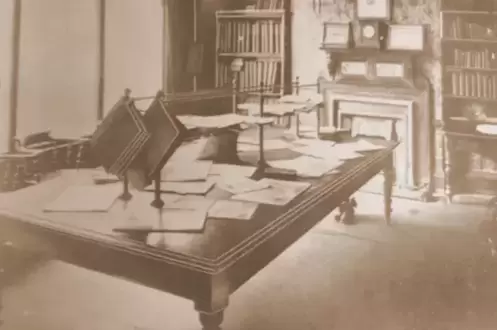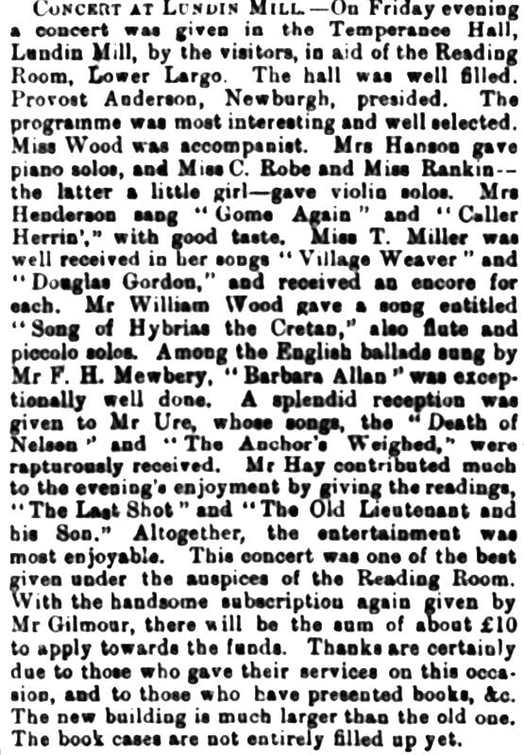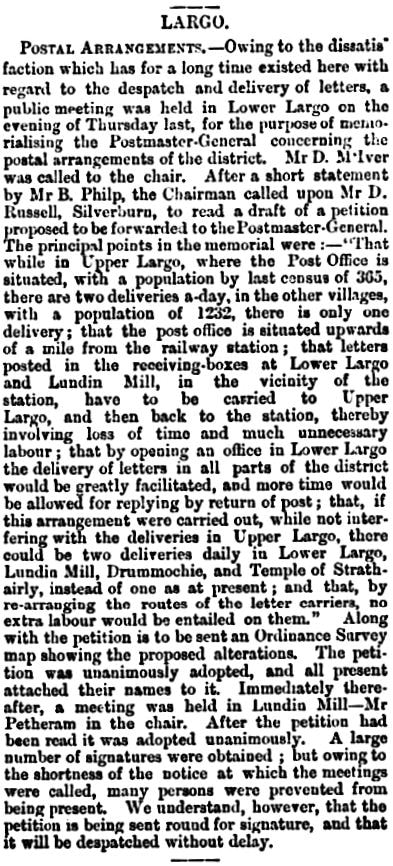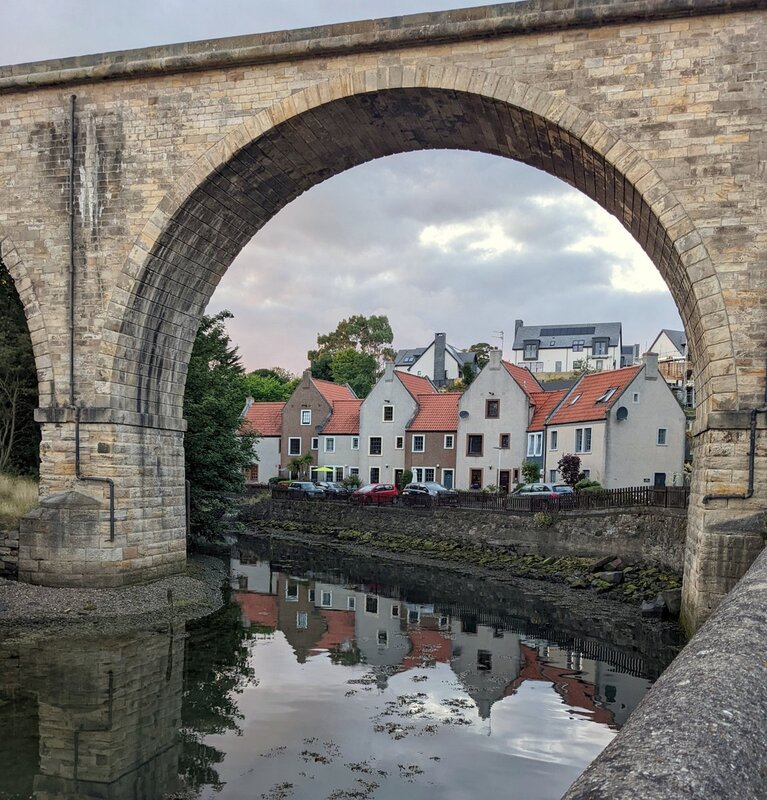Reading rooms, like the example above, became a common feature of villages and towns across the country in the late Victorian era. These offered a venue supplied with books, journals and newspapers where, for a small charge, locals and visitors could meet, sit and read. A supply of books would be maintained, perhaps by donations from individuals or with funds raised by special events. Reading rooms sprung up around Fife, including at Anstruther, Cellardyke, Pittenweem, Crail, Colinsburgh, Ladybank, Kennoway, Buckhaven and East Wemyss to name just a few.
The Lower Largo Reading Room and Library was established in 1885. Its origins closely align to the time of the opening of the Post Office at Defoe Place and it seems to have been in the same vicinity. A candidate for the original reading room venue is 3 Defoe Place. This property, owned by Benjamin Philp, was empty at the time of the 1885 valuation and was not inhabited at the 1891 census. It was the postmaster who had caretaker responsibilities for the reading room.
Reading rooms were often instigated by the wealthy, motivated by a desire to offer their community recreation and self-help, as well as offering an alternative to the public house. The extract above from the 28 August 1902 Leven Advertiser relays the comments of Edinburgh music seller John Kenyon Lees, organiser of the concert in aid of the reading room that year, on how the various tradesmen should have knowledge on their calling. For example "the fisherman should know about the habits and anatomy of fishes". The fishermen would have been one of the target audiences for the Lower Largo reading room and so a location close to the harbour was ideal. In fact the piece below from the 29 May 1891 East of Fife Record states that it had "proved a great boon to the fishermen".
The same newspaper extract tells of the reading room's move to "more commodious premises at Station Road". As well as having a membership of fifty, the facility was used by the summer visitors. The new premises next to the station was another property owned by the Philp family. Although Benjamin Philp had died in 1892, his widow Euphemia is listed as proprietor of the house rented to the Reading Room Committee, per John Welsh, postmaster, see below.
A concert was held annually to raise funds to support the reading room. Below is a description of the 1891 concert, held in the Temperance Hall in Lundin Mill, reported in the 30 July Fifeshire Journal. Such concerts continued for several years, timed to coincide with the influx of summer visitors and typically raising around £10 towards the running of the reading room.
There were a number of key roles associated with the reading room - a chairman, secretary and treasurer as well as a librarian and caretaker. For most if not all of its existence the postmaster had a key oversight role for the facility. In the example from 1906 below, the joint librarians were postmaster's son Alexander Welsh junior (who would later be killed in the First World War) and William Simpson the stationmaster (6 November 1902 Leven Advertiser).
Below is an example of the annual accounts of the reading room (9 November 1905 Leven Advertiser). The modest membership fees were outweighed by the amount raised at the annual concert (and the latter amount was more or less matched by subscriptions from local gentlemen, Sir John Gilmour of Montrave, Benjamin Cox of Largo House and George Lumsden of Aithernie House). As well as the rent of the premises, key outgoings were the caretaker's salary, the cost of fire and light and the purchase of newspapers and magazines. However, not long after this time, mention of the reading room disappears from the newspaper archives. The reasons for its demise are unclear but factors perhaps include the wider availability of affordable newspapers and the health of Euphemia Philp who died aged 90 in 1912. Perhaps others that had brought the most vigorous support to the facility in its early days had moved away or grown old. The reading room was absent from the 1915 valuation roll.































 RSS Feed
RSS Feed
